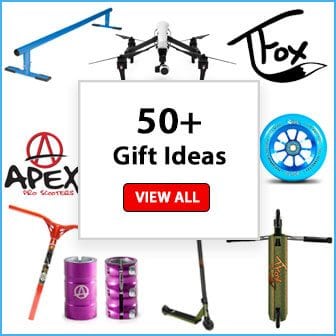It’s that time of year where you may be starting to pack all of your snowboarding essentials, or you may be trying to buy everything you need before you go. A snowboarding helmet is an essential piece of gear, as it helps protect your head and brain from any damage that could come your way. The only time you’re likely to damage them is if you fall over and hit something nasty like a rock.
In some countries, you don’t have to by law wear a helmet when you’re snowboarding or skiing, however, it is highly recommended, as you wouldn’t want to have an injury to your head or brain from a simple mistake. Plus, the risk really isn’t worth it as it is a crucial organ in your body.
So how should a snowboarding helmet fit?
It is recommended that it is best for you to try a snowboarding helmet on in a store, this way you will know what size you are specifically. However, if you do choose to order a helmet online, then it’s always best to measure your head before you do this. If you want to measure your head, it is best that you do it using a cm tape measure. You need to then wrap the tape measure around your head, but make sure it’s 1 inch above your ears and your eyebrows to get an accurate measurement.
When you either receive your helmet at home or if you’re trying it on in a shop then there are several ways that you will know whether it fits or not. When you place the helmet on your head, it should feel quite snug, but not too tight. Also when you move your head, you shouldn’t be able to feel the helmet moving back and forth if you do then this means that it is probably too big for you.
It’s also essential that you try a pair of snowboarding goggles on when you’re trying on the helmet because this will help you see if the helmet fits or not. If there is a gap between the top of your helmet and the goggles, then this will mean that it does not fit correctly. It also shouldn’t be too low making the goggles seem pushed down. The helmet needs also to be low enough to protect your forehead. Another part of the helmet that you should check is the chinstrap, because this needs to fit against your throat snugly, and one rule to follow is that you shouldn’t be able to chew food when wearing it, but it shouldn’t be too tight where it’s pinching you.
Size Chart
Certified size chart includes Classic Street, Classic Snow, Legend Snow, Classic 2.0 Street, Classic 2.0 Snow, and Legend Street.
| Length | Kid’s | Small | Medium | Large |
| Cm | 42-48 | 48-54 | 55-58 | 59-61 |
| Inches | 16.5-19 | 19-21.5 | 21.5-23 | 23-24 |
Low Rider Size Chart
This includes Legend Low Rider, Classic Low Rider, and Classic 2.0 Low Rider.
| Length | S/M | L/XL |
| Cm | 54-58 | 58-62 |
| Inches | 21.3-22.8 | 22.8-24.4 |
Adult size info:
It’s important to remember that some of the helmets sizes may differ compared to other helmet brands. This is why it is so important to always try them on before you buy them. You may also find that sometimes you could actually be between sizes and then you may be in a dilemma over which size you should go for.
In this case, it’s better to go for the slightly larger option providing it’s not too big on your head. Plus, if you purchase a helmet that actually has a BOA system, then you will be able to adjust it to fit your head correctly. However, if it does not have this, then you can always wear a thin hat under your helmet to make it snugger.
Kids size info:
The rules are very similar to ski helmets about the sizing information with children’s snowboarding helmets. It’s important to always double check how the helmet fits on your child, because they may not be able to describe exactly how it fits on their head. Therefore you need to check exactly how snug the helmet is on them and make sure there are no gaps between their head and the helmet.
If you liked the article, please leave your feedback.




